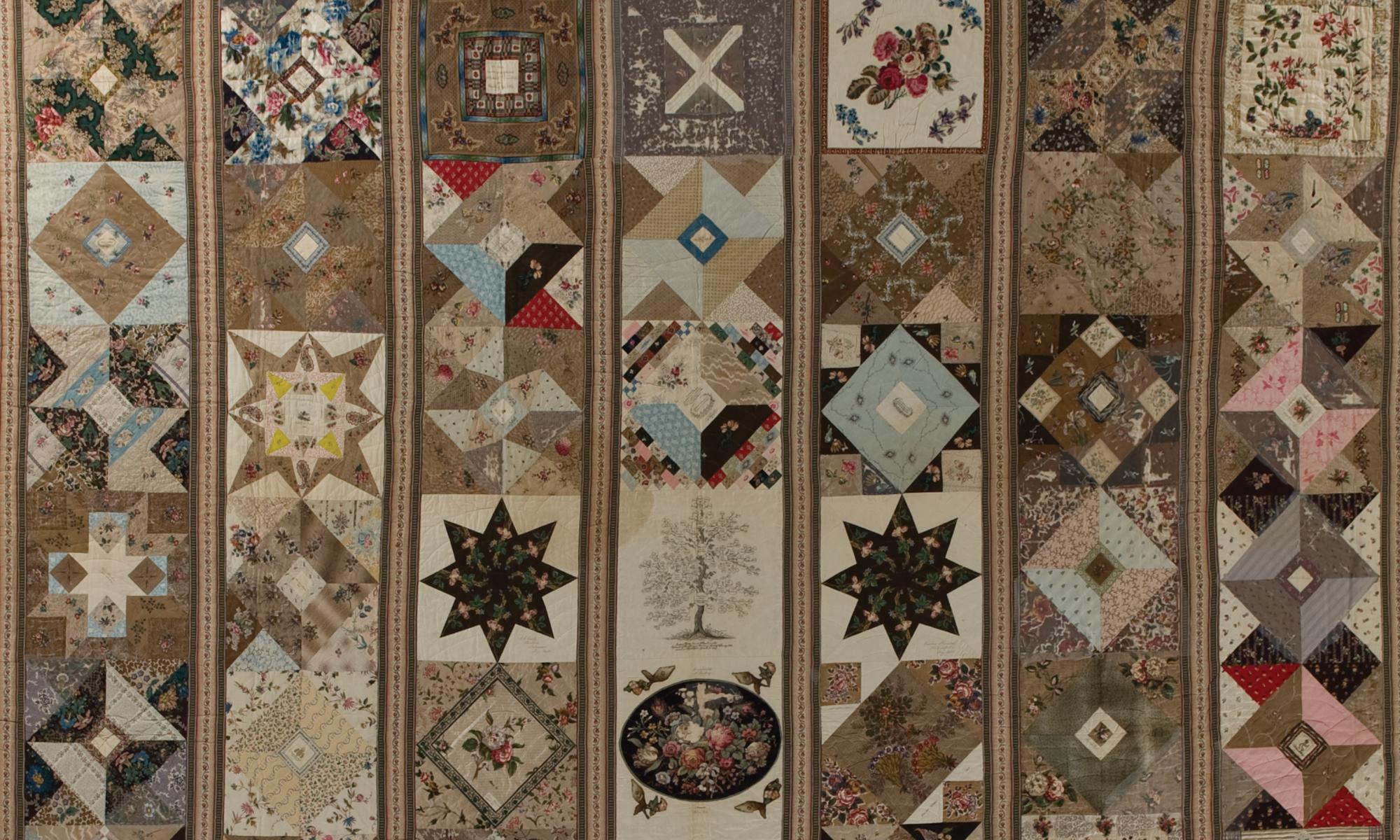
What’s in a Name?
Jan 13-Dec 2, 2012
Inscribed Quilts

A person’s name is more than a few letters and sounds that form a recognizable word. Names like Lady Gaga or Michael Jordan or Bill Clinton immediately conjure up enough stories and pictures in the mind to fill many pages. In other words, a name can represent everything we know about a person.
What’s In A Name? Inscribed Quilts is about the names of ordinary, but mostly forgotten, people inscribed on the quilts in this gallery. Using a combination of genealogical and historical research, a team of IQM staff, volunteer genealogists and affiliated scholars have rediscovered the stories and sketched the outlines of individual’s lives from long ago. In some cases, the research led us to living descendants who shared real photographs and stories handed down in their families.
What is in a name? Names inscribed on these quilts reveal networks of relationships and shared experiences and values such as friendship, honor, service, community and memory. Without the simple addition of pen and needle to cloth these people may have been forgotten. Our hope is that What’s In A Name? reveals that there is a story behind every name and inspires others to make their own inscribed quilt. And we hope some will take the heirloom quilt covered with names from their closet shelf and start discovering the stories in those names.
A full color catalog of this exhibition is available from the museum, made possible by a generous grant from the Quilter's Guild of Dallas